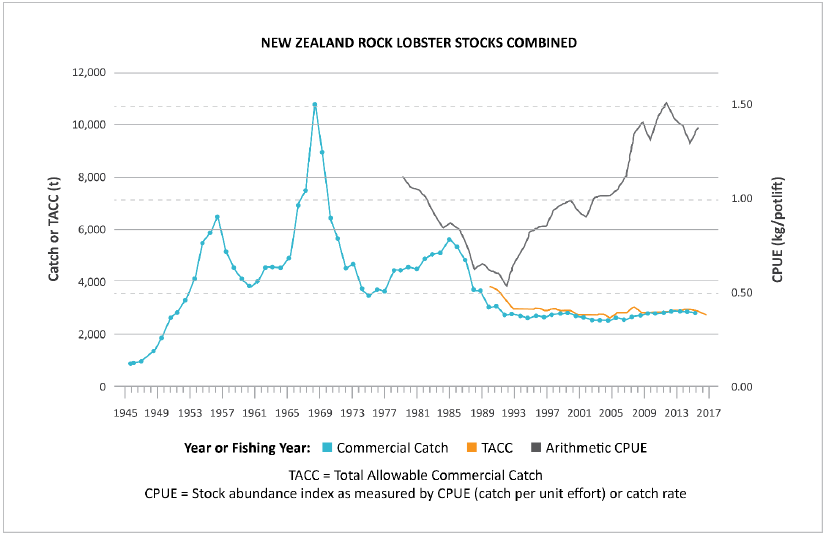Rock lobster fisheries
In 1990 rock lobster fisheries came into the New Zealand Fisheries Management regime, the Quota Management System (QMS).
Under the QMS there are nine rock lobster management areas (referred to as CRA areas) across New Zealand. For each CRA area a Total Allowable Catch (TAC) is set.
When setting TACs, allowances are made firstly for customary fishing, then for recreational fishing, then for illegal unreported removals (fish thieving). Once these allowances have been made, the Total Allowable Commercial Catch (TACC) is set for commercial rock lobster fishing.
Daily bag limits are used as a proxy for constraining the non-commercial removals to the allowances made for them, but there is little reliable information as to the actual levels of non-commercial removals from lobster fisheries.
A separate TACC is set for packhorse lobsters (PHC – 40.3 tonnes).

The graph above shows the history of the New Zealand commercial rock lobster fisheries over time. Note:
- the peak of production in the late 1960s which was driven by the Chatham Islands ‘lobster boom’ (blue line)
- the decline of Catch Per Unit of Effort (CPUE) from 1969 (black line falling)
- the subsequent rebuild of stocks (black line rising) from 1990 as the commercial catch limits (TACCs, orange line) imposed under the QMS constrained commercial removals (blue line).
Rock lobster stocks are assessed in three to five-year rotations. Five year rotations apply where annual TAC/TACC decisions are informed by Rock Lobster Fisheries Assessment Working Group Management Procedures, developed under the supervision of the Ministry.
